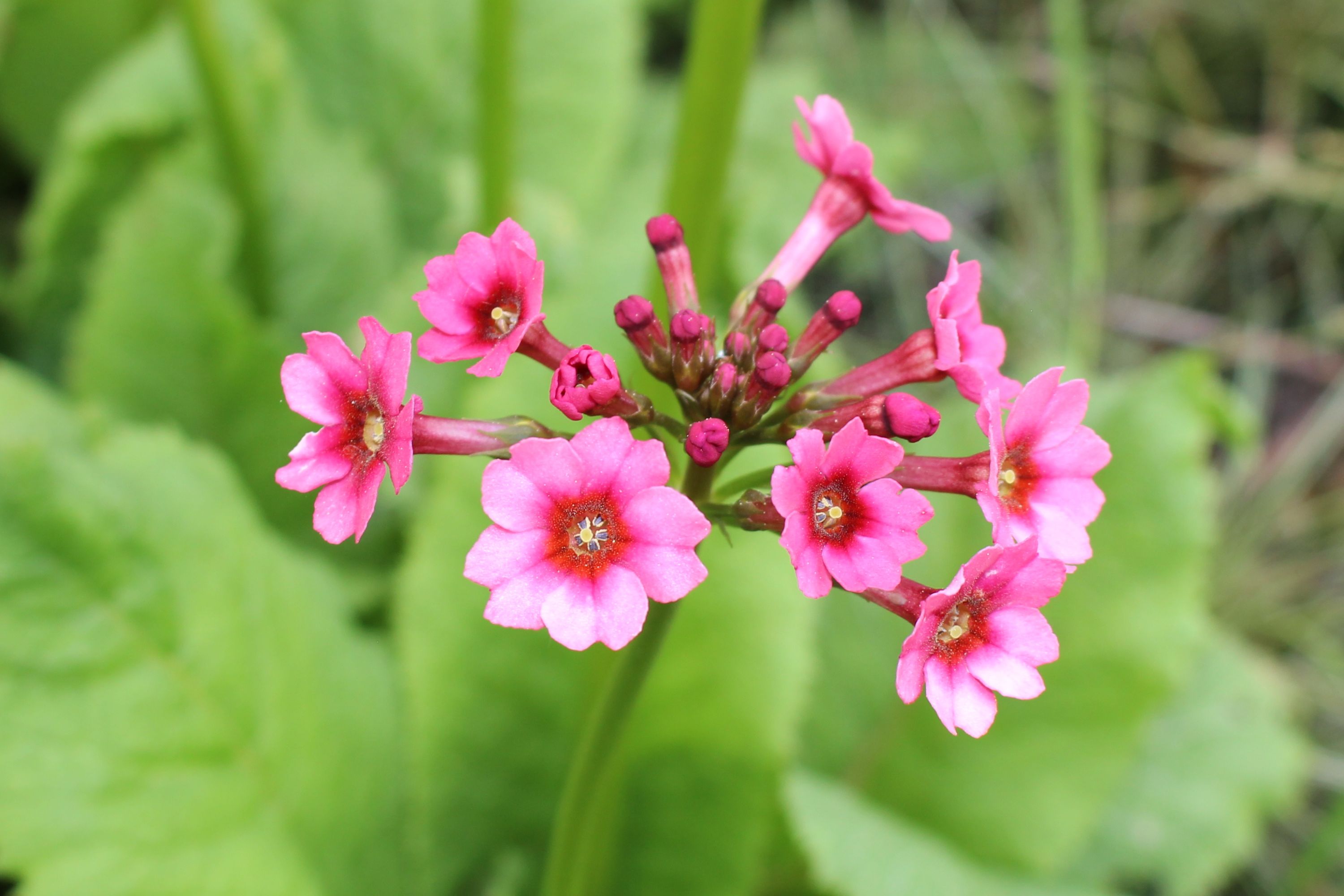Mealy primrose
(Primula pulverulenta)

Description
Primula pulverulenta, the mealy primrose or mealy cowslip, is a species of flowering plant in the family Primulaceae, native to damp habitats in China. It is a herbaceous perennial growing to 100 cm (39 in) tall by 60 cm (24 in) broad, with strong stems of deep pink flowers arising from basal rosettes of leaves in early summer. The flowers are grouped at intervals along the stem in a tiered formation, hence the common name "candelabra primula" which is often applied to this and other species with a similar arrangement. The specific epithet pulverulenta, meaning "dust", refers to the mealy white layer (farina) covering the stems of the plant. This plant has gained the Royal Horticultural Society's Award of Garden Merit. In cultivation it requires a neutral or acid soil which remains permanently moist, such as the bank of a stream or pond, in full or partial sunlight. Primula is a genus of herbaceous flowering plants in the family Primulaceae. They include the primrose (P. vulgaris), a familiar wildflower of banks and verges. Other common species are P. auricula (auricula), P. veris (cowslip), and P. elatior (oxlip). These species and many others are valued for their ornamental flowers. They have been extensively cultivated and hybridised (in the case of the primrose, for many hundreds of years). Primula are native to the temperate Northern Hemisphere, south into tropical mountains in Ethiopia, Indonesia, and New Guinea, and in temperate southern South America. Almost half of the known species are from the Himalayas. Primula has over 500 species in traditional treatments, and more if certain related genera are included within its circumscription. Primula is a complex and varied genus, with a range of habitats from alpine slopes to boggy meadows. Plants bloom mostly during the spring, with flowers often appearing in spherical umbels on stout stems arising from basal rosettes of leaves; their flowers can be purple, yellow, red, pink, blue, or white. Some species show a white mealy bloom (farina) on various parts of the plant. Many species are adapted to alpine climates. Primula was known at least as early as the mediaeval herbalists, although first formally described as a genus by Linnaeus in 1753, and later in 1754 in his Flora Anglica. Linnaeus described seven species of Primula. One of its earliest scientific treatments was that of Charles Darwin study of heterostyly in 1877 (The different forms of flowers on plants of the same species).
Taxonomic tree:







